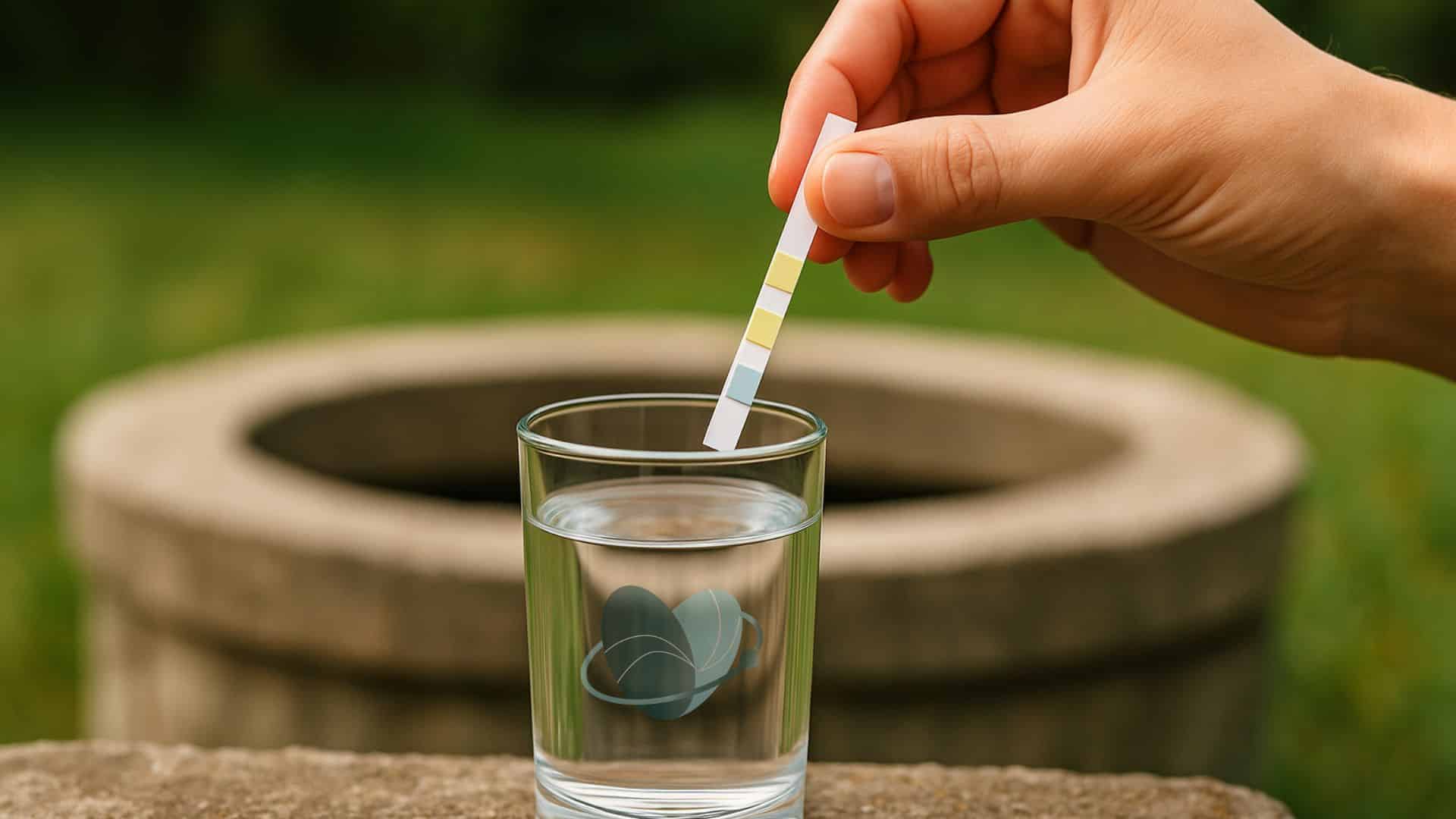Well water testing at the cottage and at home – an easy way to ensure clean drinking water

Testing well water is a small act that has a big impact
Well water testing is an important but often forgotten part of everyday and leisure health care. If you use water from your own ring well or drilled well, its quality can vary greatly depending on the season, weather conditions and the condition of the well – even if the water looks clear and tastes normal.
Well water can hide invisible surprises: bacteria, nitrates, too much iron or an unbalanced pH. These are not visible to the eye, but the body can notice them – especially in the most sensitive users, such as children, the elderly or pets.
Testers. With water quality tests, you can do well water testing easily and quickly – without a lab visit or complicated equipment. The tests are designed for home use and approved by the EPA, so you can rest easy knowing that you get reliable, quickly interpretable information about your water – without the hassle or laboratory hassle.
Why should well water testing be done at least once a year?
Finland’s well water may be of high quality, but monitoring is the responsibility of the well owner. Unlike municipal tap water, well water does not undergo continuous monitoring – which is why testing is the only way to ensure its safety.
In particular, these situations are clear signals that the test is necessary:
- Spring rains and melting snow can flush surface water into the well
- The taste or smell of the water has changed
- The well has been unused for a long time
- The structures of the well are old or suspicious-looking
- Agriculture, animals or industry are nearby
- A new borehole is in use, the quality of which has not yet been tested
Testing well water at least once a year – and especially in the spring – is a good rule of thumb. It gives you peace of mind for the whole cottage or home season.
Mitä kaivoveden testissä mitataan?
Basic well water testing can be easily done with the Safe Well Rapid Well Water Test, which measures the most important values that affect the usability and taste of the water. The test covers the following measurement targets:
- pH value – indicates the acidity or alkalinity of the water
- Total alkalinity – describes the buffering capacity of water for changes in pH
- Hardness – affects the taste of water and can cause limescale deposits
- Nitrate and nitrite – especially harmful to young children and pregnant women
- Iron – can cause taste problems, discoloration and technical problems
The results are clear and available in a few minutes, and no special knowledge is required to take the test.
In addition to the basic test of well water, it is always recommended to perform a bacterial test that identifies possible faecal bacteria such as E. coli. The presence of bacteria in the water is a clear sign that the well may be contaminated and needs cleaning or maintenance.
If you want the most comprehensive analysis of water quality, the best choice is the Comprehensive Household Water Home Test, which includes all of the above tests and much more – such as copper, chlorine, hydrogen sulphide and many other water quality parameters.
Testing well water at the cottage – not just a summer concern
Many people only think about cottage water in the summer, but in reality, the cottage has become a second home for many people all year round. Remote work, weekend spurts and longer holiday periods mean that water is used more and more diversely.
The cottage often has its own well, the water quality of which is more sensitive to changes than in the municipal water network. For example:
- Animals get close to the well
- Precipitation and surface runoff can be washed into the well structures
- The well may have remained unmaintained for years
- Temperature fluctuations and frost can affect structures
Testing well water at the cottage is a quick and simple way to make sure the water is safe – especially if you drink it straight or use it for cooking. No one wants to offer their guest coffee with a hint of iron or a drop of uncertainty.
This is how well water testing is done in practice
Testing is easy as follows:
- Take the water sample into a clean glass or container – let the tap drain for a while before sampling
- Immerse the test strip in water according to the instructions
- Wait for the allotted time – usually a few minutes
- Compare the result with a colour chart – and read an assessment of the water quality
The test can be done anywhere – at the cottage, at home or even on a boat before cooking. Reading the result is as easy as following the weather forecast, but the effects are much more important.
What if the results differ from the recommendations?
If the test results show abnormalities, it is not a disaster. It’s knowledge – and knowledge helps you react.
- Too much iron or copper? → Consider a water filter
- Bacteria? → The well can be cleaned and disinfected
- Abnormal pH or hardness? → Water may still be usable but needs adjustment
- Nitrates? → You should do a more detailed test or consult an expert
The most important thing is that you don’t guess – you know.
Summary: Well water testing brings certainty to everyday life and leisure time
Well water testing is a simple, fast and affordable way to protect your health and the health of your loved ones. One test a year can prevent stomach bugs, strange odours and costly equipment damage – and give you the most important thing: peace of mind.
Testerit.fi’s water quality tests are designed so that anyone can use them. No laboratory, no trivia – just clear answers when needed.
Want to know more about water quality?
If you want to delve deeper into what good household water is like and what values it should fulfil, you can read more from official sources:
The link provides reliable information on water quality, recommended limit values and how you can interpret the test results more accurately.
🔎 Order a quick well water test easily to your home or cottage:
👉 https://testerit.fi/tuote-osasto/veden-laatutesti
🧪 Testers – because good water is not a coincidence, but a decision to test.
